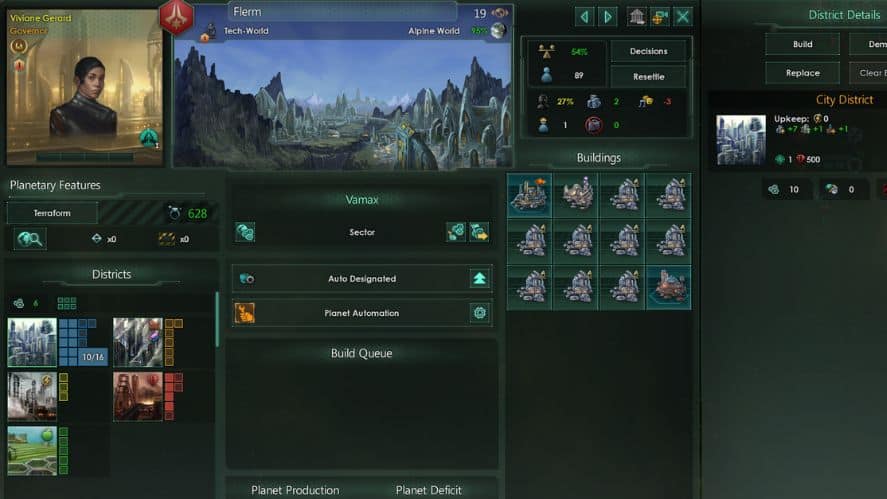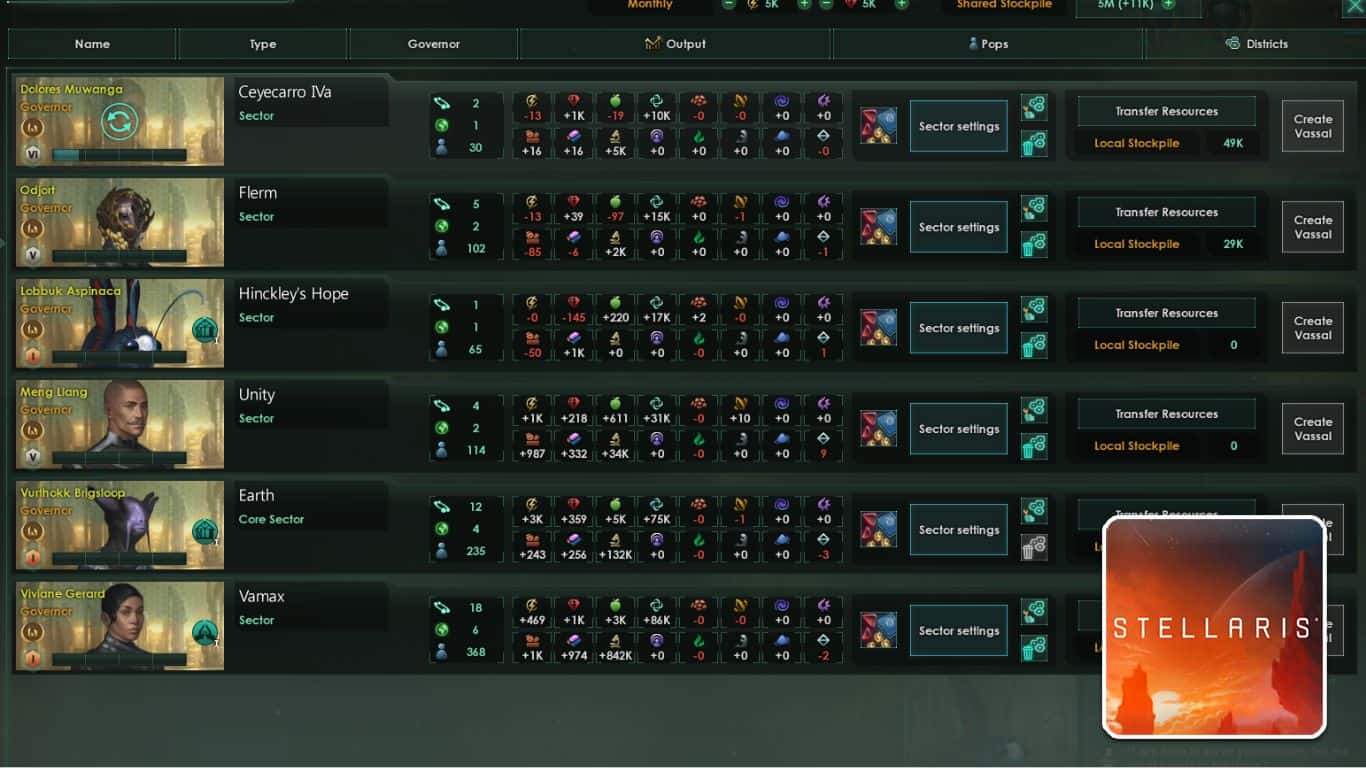Planets are the lifeblood of an empire’s economy. That is why knowing what to build on your planets is one of the primary drivers of success in Stellaris.
Due to the galaxy map being unique and your starting position within being random, there is no one size fits all solution to planetary buildings. Nonetheless, there are some good rules to follow that can elevate your planets.
Recommended Read: How Does Trade Work in Stellaris?
Planet optimization can be a deep rabbit hole to explore. The best part is that great results are possible without the need for painstaking micromanagement. However, if painstaking micromanagement is your yum, it is available in spades.
Planets are at their strongest when they are specialized for a single purpose, for example, research. So, the best things to build are buildings that facilitate your desired output.
Table of Contents
What to Build on Planets in Stellaris
When deciding what to build on your first planet, no one would blame you for feeling a little overwhelmed. I know I sure was.
Lucky for us, no construction that takes place on a planet is permanent. Anything you build is removable or replaceable as and when the need arises.
With such a long list of building choices, how do you decide what you should be building? Well, in my opinion, one of Stellaris’s biggest weaknesses is that a lot of the building choices are weak.
While this does make the planet design decision space easier, you do end up building the same planet a lot across multiple games.
This guide will cover: why specializing planets is the best method, a list of buildings you should avoid making, and some tips on planetary management.
Why You Should Specialize Your Planets
When building a planet, there are two design philosophies. You can look at what your empire needs at that moment, for example, you may be short on consumer goods. So, you find a planet with space, and you build something that produces consumer goods.
The other, and far superior way, is to have a planet specialize in the production of a particular resource.
The reasons specialized worlds are better are as follows:
- They are much easier to manage. You can rename the planet to the resources it’s built for. For instance, food 2 or alloys 1.
When noticing you are low on a resource, a brief glance at the side panel will show you exactly where you need to build more.
- Planetary designation buffs. You can give every colony you own a designation. Depending on a planet’s designation, it will receive production bonuses.
For example, designating a planet as an agri-world provides bonuses to food production. If that planet is full of mining districts, or research buildings, they will not be producing at optimum capacity.
- They outperform cobbled-together planets. A planet loaded with buffs for production of a particular resource can easily produce more than 5 planets worth of non-specialist builds.
Foundry worlds can carry a war effort. If you find yourself outnumbered and outgunned, your alloy economy can save you.
If you have the alloy production to replace your fleets, it is only a matter of time before the enemy falters under your attrition warfare.
How to Specialize a Planet
Specializing worlds is easy. The first stage is colonizing the planet, and then you decide which resource you want the planet to produce for your empire.
Your decision can and should be affected by planetary modifiers. A planet with the lush modifier is an ideal candidate for an agri-world.
The 20 percent buff to food production takes this planet’s food production potential above and beyond.
After selecting the resource and building your population for a while, it is time to start building districts and buildings that produce your desired resource.

You also want to change the planetary designation to one that boosts the resource you intend to produce.
Not every resource needs to have a planet devoted to it. You can still have a few extra planets for shoring up economic deficiencies.
The priority list for specialized planets is as follows:
- Forge World – Alloys
- Tech-World – Research
- Mining World – Minerals
- Generator World – Energy Credits
- Refinery World – Strategic Resources
- Fortress World – Defense Armies
- Agri-World – Food
What Not to Build on Planets
When you know what you should be avoiding, the choices you need to make for your specialized worlds become much clearer.
The buildings to avoid are:
- Commercial zones. Extra trade value is nice, but pops can do a lot more working other jobs.
- Resource Silos. They may be cheap, but being able to have extra resources is never a vital component of Stellaris. I avoid making these.
- Housing buildings. It is better to build districts than to build these. Avoid wherever you can.
- Gene Clinics. The pop speed bonuses stop being useful very fast. The consumer goods upkeep is not worth the cost. If you want to use these, build early in a planet’s development and replace when you have enough pops.
- Law Enforcement buildings. If you have a crime problem on a planet. Building a few of these can help bring things in order, and when crime is gone, replace them.
- Shield Generator. A case could be made for these on fortress worlds, but other than that, they are a wasted slot. If the enemy is bombarding you, it is already too late.
Planetary Management Best Tips
Planetary management can seem daunting, but it doesn’t have to be. This next section will explain some useful tips that will help you make the best decisions about what to build on planets.
- Don’t build what you cannot use now. If your plan for a planet is to have 100 pops on there, don’t build 100 houses when there are only 20 pops living there.
Unused infrastructure still has a maintenance cost, and if it isn’t in use, it is a waste of resources.
- You don’t need to create specialist colonies straight away. Wait until you have researched the correct technologies and have already created a strong economic foundation.
Remember, nothing you build on a planet is permanent, and you should not hesitate to make changes.
- Fortress worlds are expensive but can stop AI opponents in their tracks. While pricey, these planets are nigh on impervious to ground assaults.
The AI will have to waste vital time bombing your fortresses, giving you the time you need to mount a counteroffensive.
- Do not trust the AI to auto-manage your specialist planets. I am an advocate for letting the AI take control of sectors, reducing the workload on the player.
Do not let them run your specialist planets. They will not conform to your vision and will wreck everything you worked hard to achieve.
This is everything you need to know about what to build on your planets in Stellaris.
If you have any questions or suggestions for this guide, please let us know in the comments section below.
As always, have fun building up your planets in Stellaris.




